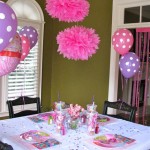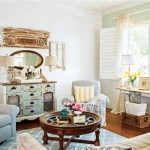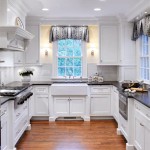How to Decorate Rustic Style Houses Exteriors
The rustic style aesthetic evokes feelings of warmth, comfort, and connection to nature. When translated to the exterior of a house, it creates a welcoming and inviting ambiance that blends seamlessly with its surroundings. Achieving a successful rustic exterior involves careful consideration of materials, colors, landscaping, and architectural details, all working together to project an image of timeless simplicity and natural beauty.
Rustic exterior design pulls inspiration from diverse sources, ranging from traditional farmhouses and log cabins to mountain lodges and countryside cottages. Despite the variations, a common thread unites these styles: an emphasis on natural materials, handcrafted elements, and a rejection of overly polished or artificial finishes. The aim is to create a lived-in, authentic feel that suggests a history and a connection to the land.
Before embarking on any exterior decorating project, it is essential to assess the existing architectural style of the house. A modern home might require a more subtle approach to rustic elements compared to a traditional farmhouse that naturally lends itself to the aesthetic. Understanding the baseline architecture will ensure that any additions or modifications complement the existing structure rather than clashing with it.
Choosing the Right Materials
The selection of materials is arguably the most crucial element in achieving a rustic exterior. Natural materials are the cornerstone of this style. Stone, wood, and metal are primary components that should be incorporated thoughtfully and strategically. The specific types of these materials, however, can vary depending on the desired aesthetic and the local environment.
Stone, for example, can range from rough-hewn fieldstone to carefully stacked dry stone walls. Fieldstone lends a more rugged and untamed appearance, while dry stone walls offer a more refined, yet still rustic, texture. The choice will depend on the overall desired look and the existing characteristics of the property. When using stone, consider the color and texture, ensuring it complements the house's siding and other exterior elements. Avoid overly polished or manufactured stone that lacks the natural variations inherent in real stone.
Wood is another essential material. Options abound, including reclaimed wood, cedar shingles, pine siding, and rough-sawn lumber. Reclaimed wood, with its inherent imperfections and history, adds instant character and a sense of age. Cedar shingles offer a classic rustic look and are naturally resistant to decay and insects, making them a practical choice for siding. Pine siding, in various finishes and profiles, is a versatile option for a rustic exterior. Rough-sawn lumber, with its visible wood grain and texture, adds a raw and natural element.
Metal accents, such as wrought iron railings, copper gutters, and metal roofing, can enhance the rustic aesthetic. Wrought iron adds a touch of timeless elegance and durability, while copper develops a beautiful patina over time, adding character and visual interest. Metal roofing, particularly in earth tones, is a long-lasting and visually appealing choice for a rustic home. Avoid bright, shiny metals, opting instead for finishes that are matte, weathered, or aged.
In addition to these primary materials, consider incorporating natural elements like river rock for pathways, gravel for driveways, and mulch for landscaping. These materials contribute to the overall rustic aesthetic and create a cohesive and natural environment.
Color Palette and Landscaping
The color palette for a rustic exterior should be inspired by nature. Earth tones, such as browns, greens, grays, and tans, are the foundation of this style. These colors blend seamlessly with the natural surroundings and create a sense of harmony.
Siding colors can range from warm browns and tans to cool grays and greens. Consider the surrounding landscape when selecting a siding color. If the house is surrounded by lush greenery, a deeper brown or gray might be a good choice. If the landscape is more arid, a lighter tan or beige might be more appropriate. Avoid bright or artificial colors that clash with the natural environment.
Trim colors should complement the siding color. White or off-white trim can provide a clean and classic contrast, while darker browns or grays can create a more muted and understated look. Consider the architectural details of the house when selecting trim colors, highlighting features such as window frames, door frames, and porch railings.
Accent colors can be used sparingly to add pops of color and visual interest. Consider using natural colors like deep reds, rusty oranges, or muted yellows for doors, shutters, or planters. Avoid overly bright or neon colors that detract from the overall rustic aesthetic.
Landscaping plays a crucial role in enhancing the rustic exterior. The goal is to create a natural and informal landscape that blends seamlessly with the surrounding environment. Native plants are an excellent choice, as they are adapted to the local climate and require less maintenance. Consider incorporating a variety of plants, including trees, shrubs, flowers, and ground cover, to create a layered and textured landscape.
Avoid formal landscaping elements such as perfectly manicured lawns and precisely trimmed hedges. Instead, opt for a more natural and untamed look. Allow plants to grow freely and naturally, creating a sense of organic beauty. Incorporate natural elements such as rocks, logs, and wood chips to add texture and visual interest.
Consider adding a gravel pathway or a stone patio to create a welcoming outdoor space. A porch swing or rocking chairs can add a touch of nostalgic charm. Use outdoor lighting to highlight architectural features and create a warm and inviting ambiance. Choose lighting fixtures that complement the rustic aesthetic, such as lanterns, string lights, or sconces with a weathered finish.
Architectural Details and Accents
Architectural details and accents can significantly enhance the rustic exterior. These details add character, visual interest, and a sense of authenticity.
Porches are a hallmark of rustic architecture. A wide, covered porch provides a welcoming outdoor space and adds visual appeal to the front of the house. Consider adding a porch swing, rocking chairs, or a rustic outdoor table and chairs to create a comfortable and inviting seating area.
Shutters can add a touch of rustic charm and visual interest to windows. Choose shutters made from natural wood, such as cedar or pine, and stain or paint them in a complementary color. Avoid plastic or vinyl shutters that lack the natural texture and character of wood.
Window boxes filled with colorful flowers or trailing vines can add a touch of whimsy and charm to windows. Choose window boxes made from natural materials, such as wood or metal, and select plants that complement the overall rustic aesthetic.
Exterior lighting can significantly enhance the rustic exterior, especially at night. Choose lighting fixtures that complement the overall style, such as lanterns, string lights, or sconces with a weathered finish. Use lighting to highlight architectural features, illuminate pathways, and create a warm and inviting ambiance.
Consider adding a rustic mailbox, a weather vane, or other decorative accents to enhance the exterior. These details add character and visual interest and can reflect the homeowner's personal style. Choose accents made from natural materials, such as wood, metal, or stone, and ensure they complement the overall rustic aesthetic.
Adding a touch of vintage or antique elements can also enhance the rustic exterior. Old farm tools, antique signs, or vintage furniture can add character and a sense of history. Use these elements sparingly, ensuring they complement the overall style and do not overwhelm the space.
Finally, remember that the key to a successful rustic exterior is to create a cohesive and harmonious design. Every element, from the materials and colors to the landscaping and architectural details, should work together to project an image of timeless simplicity and natural beauty. Avoid overly polished or artificial finishes, opting instead for materials and textures that are natural, weathered, and authentic.

16 Modern Rustic House Exterior Makeovers Brick Batten

16 Modern Rustic House Exterior Makeovers Brick Batten

16 Modern Rustic House Exterior Makeovers Brick Batten

The Ultimate Guide To Farmhouse Exterior Design Nikki S Plate

Rustic Cottage With Neutral Interiors Home Bunch Interior Design Ideas

Mountain Style Homes Rustic Or Modern Discover Your

Lake House Tour Front Exterior Eva Shockey

16 Modern Rustic House Exterior Makeovers Brick Batten

Living With Style Rustic House Design And Home Decorating Ideas For Every Room

Exterior House Paint Ideas To Refresh Your Home S Look







